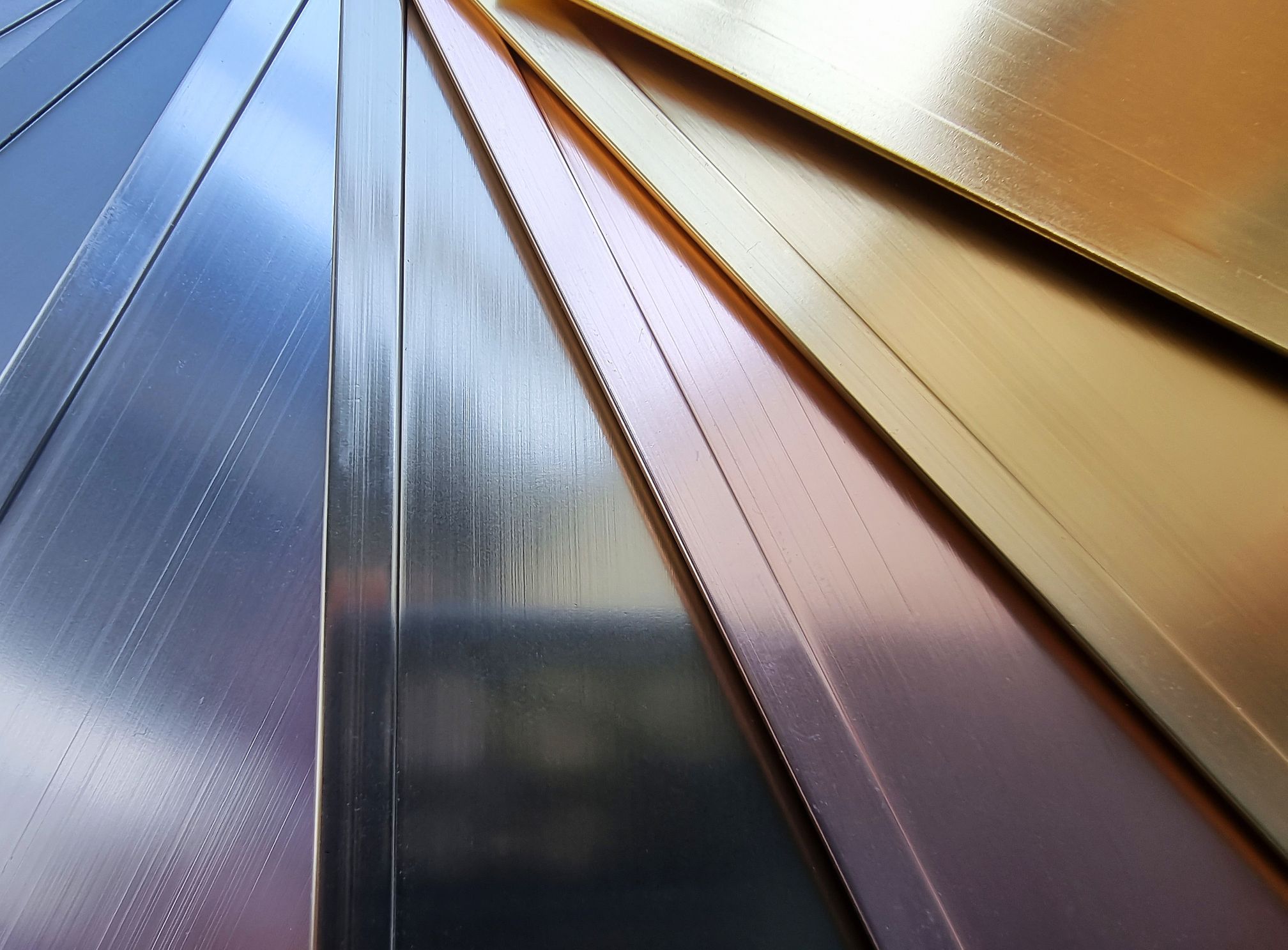
Top Metal Finishes for Every Surface Type
May 13, 2025Reflective Power and Privacy: The Bold Impact of Mirror-Like Metal Finishes
The interior of a space communicates its needs. Some demand subtlety and warmth, which gold, bronze, and copper finishes provide. Others seek clarity, contrast, and confidence, where stainless steel effects and more modernist finishes speak the loudest. That’s where modern metallic design earns its place. Often used to create a stainless steel effect or a brushed metal look, these finishes transform interior glass into both a design feature and a functional barrier: Explore the truth about unbreakable glass and its compatibility with metal films.
In office spaces, mirrored films offer privacy without sacrificing natural light. In retail and hospitality, high-end surface coverings add a touch of futurism and sleek sophistication, often serving as both backdrop and focal point. The reflective surface can visually expand smaller areas, bounce light deeper into a space, and define zones without resorting to structural changes.
These decorative metal film finishes are not just visual — they provide a layer of solar performance too. Glare reduction, UV filtering, and even moderate heat control are all practical side effects of a quality window film. This makes them ideal for glass partitions, storefront windows, or sun-exposed areas where temperature and visibility need managing without compromising on aesthetics.
Matching Finish to Function: How to Choose by Surface Type
No two interior metal surface finishes behave the same, and not all decorative metal films perform equally across different materials. The key to a successful application isn’t just choosing a beautiful metal finish — it’s choosing the right one for the right surface.
On glass, mirrored or films with a brushed metal look offer both aesthetic and performance advantages. Their reflective quality enhances light play, while functional benefits like UV filtration and privacy make these high-end surface coverings ideal for windows, partitions, or façades.
For walls and doors, durability matters. A brushed metal look or stainless steel effect can elevate an otherwise flat plane without the effect becoming overbearing or visually ‘heavy.’
Cabinetry and furniture benefit from finishes with a finer grain or softer reflectivity. Here, texture takes center stage. Warm metal tones — gold, bronze, and copper finishes — lend depth and richness, while cooler tones keep things sharp and contemporary.
In retail or commercial displays, bold metal finishes can be used to guide sightlines, accentuate featured products, or create immersive brand atmospheres.
Ultimately, the best results come from understanding how the decorative metal film will interact with the substrate beneath — and what you want it to say once it’s applied.
Beyond the Finish: Understanding Glass and Film Compatibility
When choosing metal finishes for glass applications, it’s easy to focus purely on the visual impact — the brushed metal look, the stainless steel effect, or the ambient reflections. But it’s just as important to understand how decorative metal film interacts with the substrate itself.
Glass isn’t always as straightforward as it seems. Myths around “unbreakable glass” often lead to misunderstandings about safety and performance. If you’re applying interior metal surface finishes to windows, partitions, or façades, knowing the limitations and strengths of the underlying material is crucial.
There are helpful guides on the internet about the myth vs. reality of unbreakable glass, but the bottom line is that window films and glass are more than just finishes; they are functional and protective additions to breakable areas.
Elevate Every Surface with the Right Metal Finish
Whether you’re redesigning a retail space, updating office interiors, or refining a residential feature wall, the right metal finishes offer more than visual impact — they add texture, structure, and performance. From the subtle elegance of a brushed metal look to the bold confidence of a stainless steel effect, today’s decorative metal films deliver both style and substance.
By choosing high-end surface coverings that suit your surface — glass, wood, or composite — and align with your space’s function, you’ll achieve striking and sustainable results. These interior metal surface finishes aren’t just frivolous design details; they’re defining features of a truly considered space where form and function marry in a space that’s not just attractive and usable but also durable.